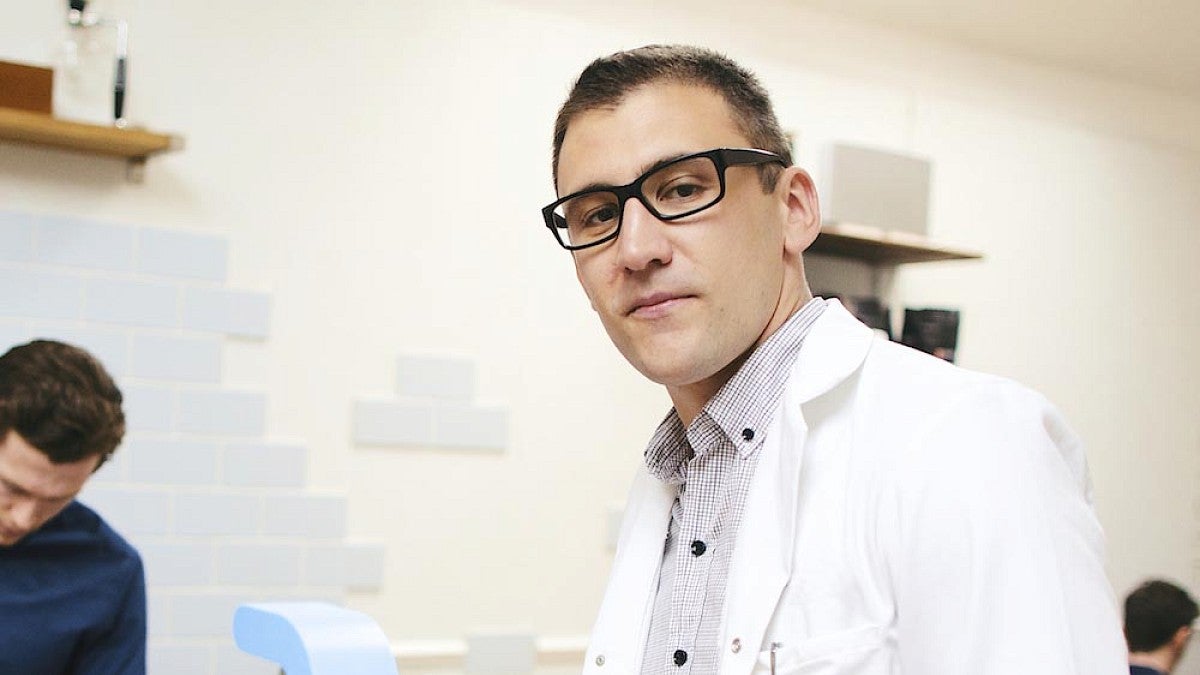Chemist and recent UO hire Christopher Hendon says his decision to come to Oregon was a relatively simple calculation.
“I asked myself, ‘Do I like the program? Will I fit in with the other faculty? Do I like Eugene? Will I be able to make a contribution to the university’s research culture?,’” Hendon said. “I feel like it is a school where I can be successful both in teaching and research. As a result, it’s a place where I feel like I can do excellent science with excellent students and colleagues.”
Hendon is a computational chemist — think chemistry without the chemicals — who will bring his broad experience to bear on the ongoing challenge of developing more efficient energy sources. He’s the first hire in the UO’s Energy and Sustainable Materials Initiative, a Cluster of Excellence that builds on UO's existing strengths in green chemistry, sustainable materials and renewable energy.
The Clusters of Excellence faculty hiring initiative was announced in 2014 and designed to attract more research-active, tenure-track faculty members. President Michael Schill has set a goal of hiring an additional 80 to 100 faculty members over the next five years to boost the university’s research activity and invest in the institution’s academic strength.
Hendon’s skills and experience as a highly cited chemist, who previously oversaw more than 40 scientists on three different research projects as a postdoctoral research scholar at the Massachusetts Institute of Technology, attracted the attention of UO faculty. As a member of the cluster initiative, he will join an interdisciplinary group of scholars building the UO’s reputation as an international leader in energy and sustainable materials and enable high-impact research and education.
“Chris represents a very unique hire that would have been difficult to make out of our normal departmental search process in chemistry or physics,” said Shannon Boettcher, UO professor of chemistry and co-director of the Energy and Sustainable Materials Initiative. “He complements our existing excellent theoretical chemistry and physics colleagues by bringing a focus on applying state-of-the-art computational techniques to solve practical challenges in designing materials for energy and sustainability applications.”
As a computational chemist, Hendon’s role when he joins the UO in August will be to use computers to solve complex materials chemistry problems. He will work alongside UO faculty members in chemistry such as Boettcher, Jim Hutchison, David Johnson, Michael Haley, Darren Johnson and Ramesh Jasti, and will likely collaborate across disciplines with physicists such as Richard Taylor.
In addition to his broad experience in computational science, Hendon has a background as a synthetic organic chemist that makes him somewhat unique in his field and a good match for a cluster hire position that blurs the lines between conventional disciplines.
“Chemists are typically the most heavy users of high-performance computing facilities,” Hendon said. “However, not all chemists like computers, and not all computational scientists like chemistry. I construct chemical models in a way that is tractable to synthetic chemists and try to marry the two sciences.”
Hendon says many of the questions UO researchers are trying to solve — heterogeneous catalysis, energy conversion and fundamental chemical structure — complement his own interests. His position is one of three within the cluster. As the group’s applied computational materials scientist, he will focus his attention on using state-of-the-art computation techniques to solve technological problems and connect his results to experimental findings, Boettcher said.
Hendon’s breadth of experience helped him win out over nearly 500 cluster applicants, an unusually high number even in the competitive fields of chemistry and physics. Much of his work to date has been focused on solving and explaining a variety of real-world phenomena important to energy science, such as how electrons move in materials and how nanoparticles form and drive efficient catalytic reactions.
As Hendon develops computational models of systems, he will be heavily reliant on the UO’s new High Performance Computing Core Facility. His focus will be on how systems of molecules and materials function and how those functions can be optimized to create better materials, faster. Some of the potential applications could include more efficient solar materials, better gas storage or other types of improved energy conversion.
—By Lewis Taylor, University Communications


